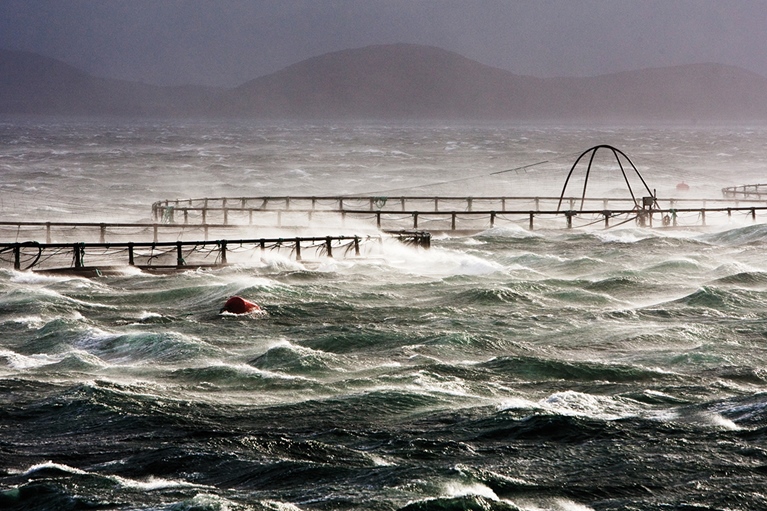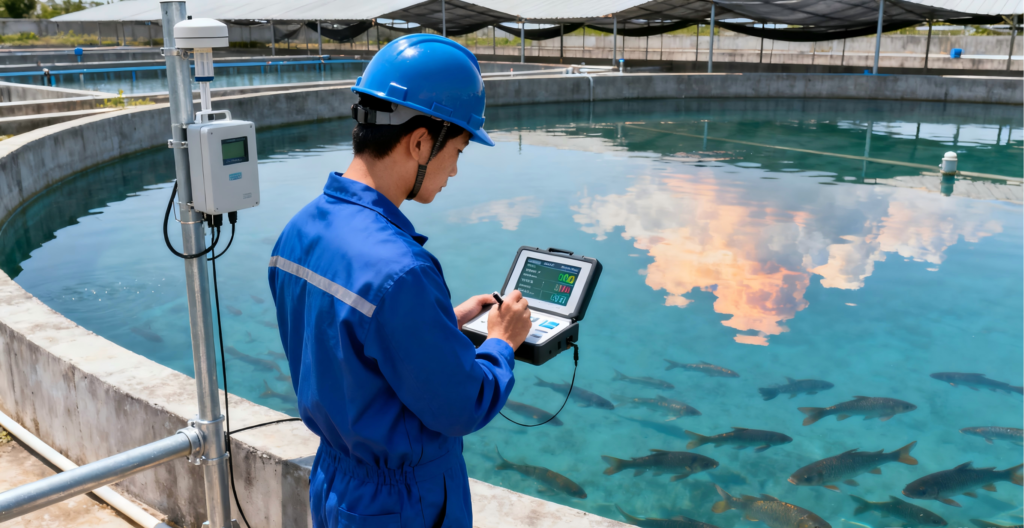Venturing further out to sea is the new frontier for fish farming. But how do we farm in deep, open waters far from the coast? Let’s dive into the current state and exciting future of deep-sea aquaculture technology.
The Current Landscape

The use of floating flexible cages in these distant waters is growing. A single cage can hold up to 435,000 fish, with a set of 12 cages capable of farming a staggering 5 million. Specially designed HDPE circular cages have proven resilient, surviving waves up to 4.5 meters high.
However, a big question remains: can these flexible cages withstand extreme weather? We lack the data to be sure. Because of this, they aren’t deployed in the most exposed seas, where giant waves could cause deformation, damage supports, and reduce the available space for the fish. They are typically placed in areas less prone to violent storms.
Semi-submersible rigid cages are gaining popularity for their sturdy build and ability to submerge during rough seas. Countries like Norway are already using them, as seen with the ‘Ocean Farm 1’ located off its coast. Both semi-submersible and fully submersible flexible cages are considered safe for highly exposed areas, but they face a different hurdle: size.
Their farming volume is typically small, making it hard to scale up to a profitable level. This is due to the difficulty of keeping the cage properly tensioned with mooring lines in constant motion. So far, no large-scale commercial projects use them, likely because the remote-control technology needed isn’t mature enough to convince investors.
For closed containment systems (essentially giant tanks in the ocean), waves present the main challenge. Because the water is enclosed, it moves with the structure, significantly increasing its total mass. This extra mass amplifies the forces acting on the system, creating safety concerns.
This trapped water can also slosh around inside the tank. In a mostly empty tank, there’s little to resist this movement, leading to powerful sloshing. This isn’t just bad for the fish; it stresses the entire structure and affects its motion. While traditional open nets don’t have this “resonance” problem, it’s a major hurdle for closed systems.
The Push for Innovation
Despite the risks, the drive to develop the ideal deep-sea farm is strong. The goal is a system that can be placed in optimal, yet high-energy, environments; is durable for long-term use; ensures fish welfare and crew safety; and is economically viable through large-scale operation.
Deep-sea farming is far more expensive than traditional near-shore aquaculture. To make it profitable, operations must be massive—sometimes multiple times larger—to achieve economies of scale. One promising way to cut costs is co-locating with offshore renewable energy projects. They can share the costs of platforms and moorings. The energy platform can even provide power for the farm, desalinate water, and produce oxygen through water electrolysis. A shared platform can also store fish feed, reducing transport costs and the need for support vessels.

Future Trends: Where We’re Heading
The future of deep-sea farming lies in innovation and cross-industry technology.
Bigger is Better: The key is scale. Newer installations, like Havfarm 1, boast a massive volume of 44 million cubic meters and can produce 10,000 tons of Atlantic salmon—equivalent to 40 traditional HDPE cages.
Built for the Storm: Equipment is being designed to handle tougher conditions. The spherical AquaPod, for example, is built to withstand 15-meter waves and can be deployed up to 20 kilometers from shore.
New Materials: Advanced materials are enabling these robust designs. Havfarm 1 uses ultra-tough FH36 steel in critical areas. The Neptun structure uses lightweight, strong fiberglass composites. Copper-alloy nets are also being adopted to effectively prevent bio-fouling.
The Smart Farm: Automation is essential. ‘Ocean Farm 1’ is a pioneer here, equipped with over 20,000 sensors and 100 monitoring devices. It has automated processes for stocking fish, feeding, monitoring, and net cleaning, drastically reducing the need for human labor.

